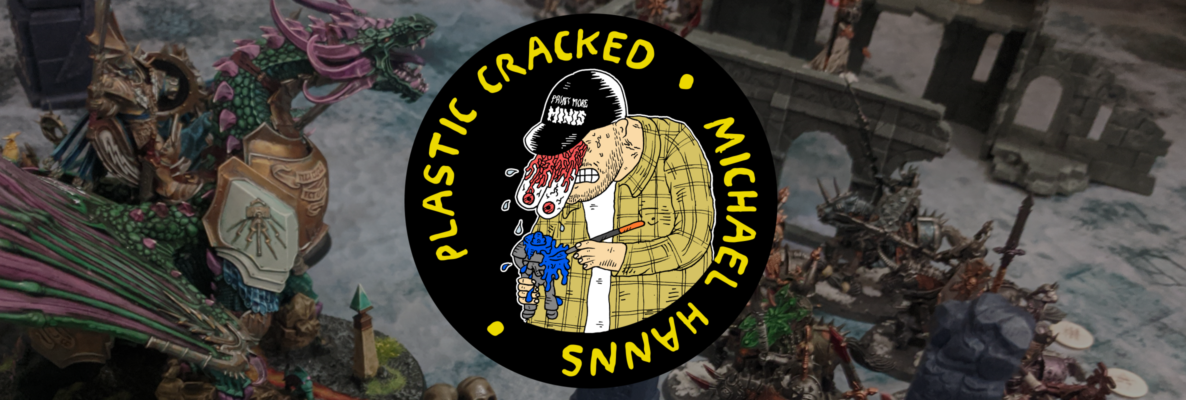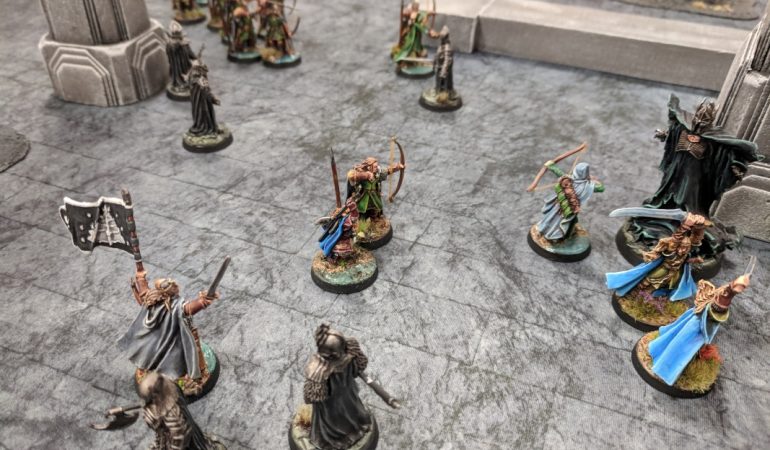
I just can’t tear myself away from Middle-earth right now. Even as the looming threat of exciting new releases in other systems urges ever closer, all the while the Heresy scene in Scotland goes from strength to strength1.. it seems that all I want to build and paint right now is Middle-earth miniatures.
With Rivendell2 and Angmar finished, both my Dol Guldur and Grey Company side projects ticked off the list, I started thinking about where I wanted to take the Middle-earth hobby next. After a little soul searching, the answer became clear – Narrative Play.
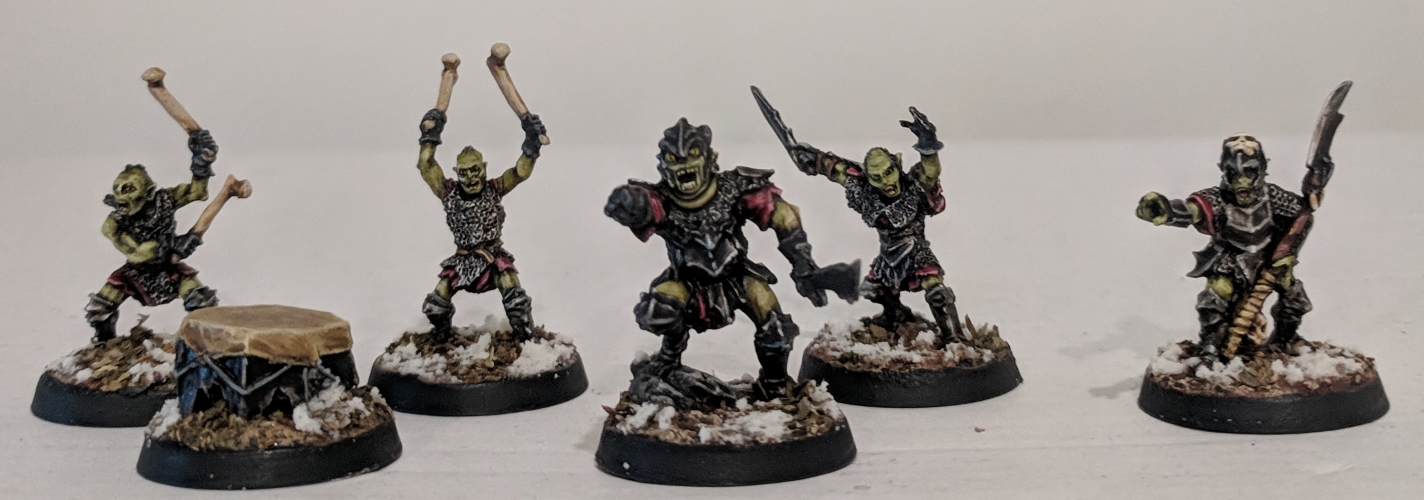
Throughout 2018, I have found myself in the fortunate position of getting a regular game in every other week at my local gaming club. Clubs are brilliant because, unlike events, you have full control over who you play and what you play, and indeed, how you play. For a lot of people, I imagine that kind of control is taken for granted, but – as the majority of my wargaming experiences come from attending events – this was incredibly liberating for me.
One of the ways in which I have been exercising this control has been in introducing the Middle-earth Strategy Battle Game to my friends at the club, through a series of demo games. I supply the rules, the miniatures, the terrain and attempt to show them the ropes. I’ve done this several times in the past, always with the intention of building hype for a new system that I want my friends to adopt and play with me – but recently it’s become more and more clear just how much I enjoy playing this style of pre-arranged game.
There’s something really rather complete about the ‘demo game’ experience. As one player is supplying all of the miniatures and the terrain, the tabletop can be – visually speaking – incredibly cohesive. Hobbyists painting styles vary wildly from person to person, and while half the fun is seeing another person’s blood sweat and tears put down on the tabletop (especially when it’s an army that you personally would never be interested in painting or playing) there’s something to be said for one cohesive art style. It’s an experience a lot closer to what you’d see in Games Workshop publications – everything fits together nicely, and you can be damn certain that every last miniature has been fully painted. As for miniature selection, the demo forces can be made to compliment each other aesthetically, whether recreating canonical conflicts or simply pairing known rivals against each other. The player running the demo even has full control over the army lists, and can build the lists themselves with restraint in mind – this is particularly easy with a demo, as you will generally be trying to give the new player a bit of an advantage to compensate for their lack of experience, or when who plays what will be randomised.
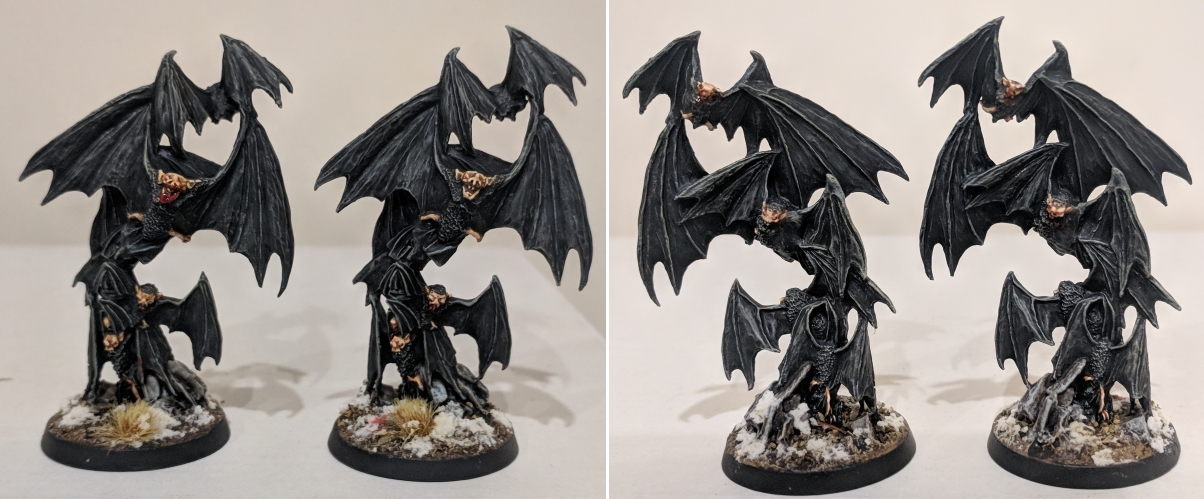
Before I started attending tournaments or other gaming events, this was always how I had intended to engage with the hobby, almost like putting together some sort of incredibly elaborate boxed game. This was what Games Workshop presented to me as ‘the hobby,’ before the gritty realities of Matched Play set in. I had been won back with the promise of Age of Sigmar’s wild ethos of “decide what’s fair yourself and play it out” and a bright-eyed notion of never playing a game without a fully painted army. The concept of competitive gaming never really entered the equation – I wanted to collect an army of hand-painted miniatures, and then watch those very same minis that I laboured over for hours come to life in a sort of interactive diorama across a cool looking landscape.
Ultimately though, wargaming is a social endeavour, one which we rely a lot on other people to play with. To play with other people, you have to find them – and one way I started to look for people was through local events, the vast majority of which being competitive tournaments. Unfortunately, it is often the case with tournament gamers that the attendance of these events – whether they are there to actually ‘compete’ or simply pack a bunch of fun games into one day – is generally the axis around which their hobby revolves. Due to the cyclical nature of the balance of power in wargaming and the ‘arms war’ of the meta-game, it’s very easy to develop the mentality that your painted miniatures are cyclical too. They’re disposable, ephemeral projects – you build up your ‘next big thing’, play with it until it becomes too stagnant in the meta, and you sell it on to finance the next big thing.
This constant cycle of disposable armies can lead towards putting pressure on yourself to get an army finished to play with before it becomes irrelevant, whilst the temporary nature of the armies can take away the emotional attachment, or pride for a job well done. Miniatures are often not considered worth the time or money if they’re not seen as feasible on the tabletop. Big hobby projects are rarely accomplished just for the fun of hobbying, and collecting and painting miniatures to fill a gap in a collection seems sort of pointless. I’ve known folk to paint armies, sell them, and then come back a year later to paint pretty much the exact same army as the meta changes and the army becomes competitive again.
It’s a wonderful thing, this hobby. It’s expansive, sprawling, and encapsulates so many different activities and ways to engage. It’s okay that we don’t all get the same things out of it. This is healthy. In the same way that one doesn’t have to enjoy the process of painting miniatures to enjoy playing tabletop wargames, we doesn’t have to play competitively, or attend tournaments at all if that’s not our bag. But we still need friends to play against, and it can be incredibly hard for sometimes – speaking from personal experience – to leave the tournament mindset at the tournament. You find yourself struggling not to take the most optimal wargear options or unit combinations, and before you know it, ‘casual games at the club’ is pretty much just ‘tournament practice.’ After all, with time and money for the hobby being so often in short supply, you probably want to invest it all in the way that will see you the most play, right?
That was the trap I fell into – I found myself building hobby project armies and then straining to figure out how to keep up with the competitive curve without forcing myself to compromise on painting the things I wanted to paint. The sad reality is that – in Matched Play – this compromise is as inevitable as playing against grey plastic models (when others want to ‘test drive’ a new unit before committing to painting them) or on a table with mismatched or aesthetically clashing terrain (when it offers ‘a better game experience’).
And so it was that I started thinking more about set, pre-ordained games where I could control the pace of the hobby and the style of game – and hey, perhaps if I was supplying all of the miniatures, then I could start building my armies to a theme! Perhaps, I could even use some of my existing miniatures and start working towards recreating key and pivotal scenes from The Lord of the Rings, and perha-
Huh.
“Fool of a Took – you’re talking about Narrative Play!”
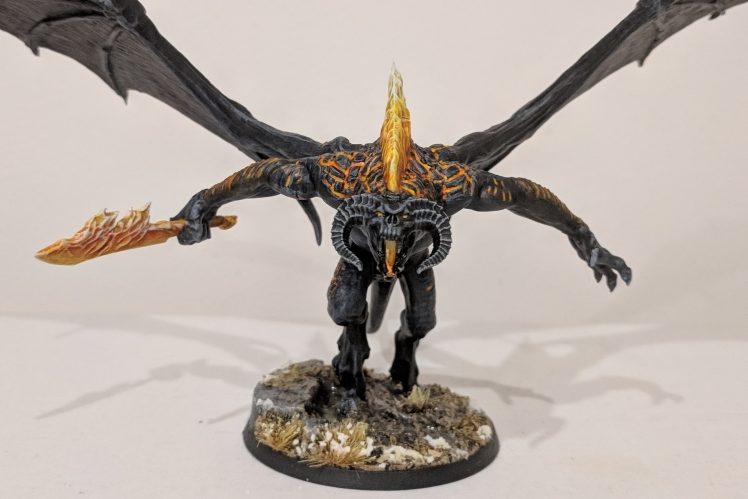
When I started playing miniature wargames again, I’d pretty much wrote Narrative Play off from the get go. I wondered to myself “who actually has the time to paint all the miniatures required to play these big narrative play games.”
A couple years on, I’ve come to the conclusion the answer is, well.. me, probably. By most peoples standards, I paint a lot of miniatures.
While I’m not going to run through the Age of Sigmar Realmgate Wars books any time soon (although that has been done by others) or the Horus Heresy for that matter5, the Middle-earth Strategy Battle Game is neither of those games. Enormous games of Middle-earth can often feature less individual miniatures than a single battleline unit in some Age of Sigmar armies, and a typical narrative scenario in Middle-earth will often feature less miniatures on the table than Troops choices alone in the Age of Darkness. There are, of course, some outliers – the Last Alliance scenario in the Armies of the Lord of the Rings is a pretty massive scale game that features 72 basic Warrior miniatures on either side – but flicking through the Gondor at War book, it actually all seems… pretty reasonable. After all, if I can paint up two fully-optioned 1800pts+ armies for Matched Play in about three months, why couldn’t I paint my way through Gondor at War – it’s not like you need the whole book in one go, right?
And so, having just recently purchased this beautiful new campaign book, and after finishing up a lovely little Grey Company legendary legion, it of course follows that I would begin at the very beginning – by playing my way through Fellowship of the Ring.
… I can explain.
I did a tally of what resources I had on hand ready to go – an Angmar army, a Rivendell army, a Fellowship of the Ring, 27 Moria Goblins and Tom Bombadil/Goldberry – and what I’d need to play a complete campaign for each of the films. Both The Two Towers and Return of the King feature massive battles for which I currently have none of the key players. I recently stripped a bunch of Fighting Uruk-Hai from my teenage years, but I’d have to paint both both a whole Rohan army and a bunch of Galadhrim to join them. I might have the Witch King, but I have no Ithilian Rangers to stand against him. I might have a load of Mordor Orcs to take Osgilliath, but no Warriors of Minas Tirith to defend the city with. I have the Grey Company to walk the Paths of the Dead, but neither an Army of the Dead to join them or Morannon Orcs or Corsairs of Umbar to assault. For whatever pieces of the puzzle I had already put together, the larger picture continued to elude me – until I looked to the Fellowship of the Ring.
The Fellowship of the Ring is a pretty interesting entry in the Lord of the Rings trilogy. Aside from being the best of the Peter Jackson adaptations, it’s also the only one that really follows a single group of adventurers. After the Breaking of the Fellowship, you’ve got the continuation of the long march into Mordor from Frodo and Sam, but the rest of the party splits into Fangorn, Rohan, Minas Tirith and all sorts. It also has features some pretty massive battles, and while the Fellowship does include mention of the Last Alliance, it’s just a little bit of fragmented backstory in the novels, and a brief prelude in the cinematic adaptation. The upshot of this – for a miniatures game – is that the majority of the ‘Good’ miniatures you’re going to use are going to be those nine Fellowship miniatures with a few supporting cast additions. In terms of bad guys, you’re mostly dealing with smaller warbands of Goblins and Uruk-hai, rather than the vast armies that besieged Helms Deep and Minas Tirith. Not only does this seem a lot more achievable, varied and fun, but it has the added benefit of being the ‘start’ of the series, which makes it a nice, sensible kicking off point.
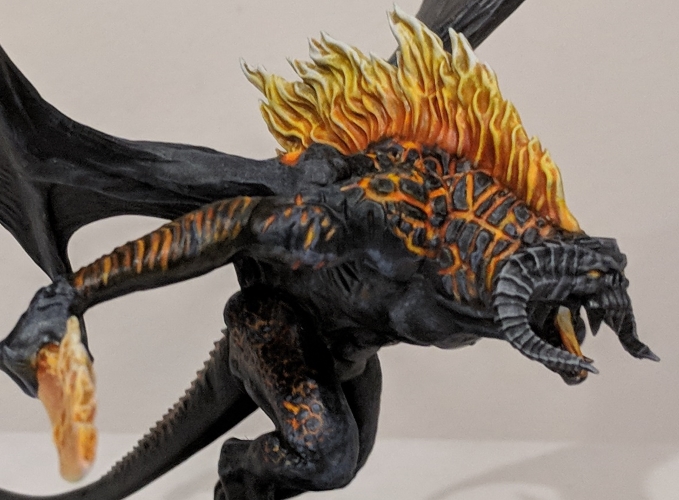
One of the great benefits of Middle-earth SBG not really changing a great deal since it’s original incarnation is that so many of the original source books are not only still more or less relevant but also pretty cheap if you can find them from second hand sources – and that’s exactly what I did.
I managed to snaffle a copy of the Fellowship of the Ring Journey Book for about £12 posted from Amazon, which felt like a pretty good deal. As this book was written with the earliest incarnations of the rules and unit profiles in mind (back when it was the LOTR SBG), I was coming in no illusions that the scenarios might require a little tweaking here and there, but as they were never designed to be balanced ‘matched play’ style games in the first place, this didn’t seem like such a big deal.
A quick nosey at the contents page convinced me of the value of my purchase straight away. When I was first milling over the idea of playing through the Fellowship in my head, I was thinking about maybe five or six overall scenarios (the Barrow Downs, Weathertop, Orthanc, Moria, and Amon Hen). This book managed to get 18 from the source material. It’s an interesting mix, with some of the scenarios fleshing out some conflicts only hinted at or referenced in the books and others recreating classic set pieces with aesthetics heavily informed by the cinematic versions. A nice touch was the scenario for The Flight to the Ford which lets you choose between either Glorfindel or Arwen, depending on your preference of source material. Nice.
Flipping through the scenarios themselves, I was pretty encouraged by the ‘to do’ list that I generated. For the side of Good, my Fellowship of the Ring miniatures would go pretty far, and my whimsical decision to paint a Tom Bombadil for funsies was completely vindicated here. For the entirety of the campaign, I would need 9 Dúnedain Rangers, Gildor, The Fellowship of the Ring, Arwen/Glorfindel on horseback and Tom Bombadil. With the exception of Gildor Inglorion, I had this side of the equation down6.
Evil was a different story, though not discouragingly so. The early missions were centred around the Nine Nazgul, with several utilising them on foot (2x Dúnedain missions, 2x Weathertop) and one on horseback (Flight to the Ford) – none of which I owned myself, somewhat ironically7. Beyond the Nazgul, I would need 4 Barrow Wights for the Barrow Downs, 10 Wild Wargs and a Chieftain, a buttload of Moria Goblins, a Cave Troll, the Balrog, 24 Uruk Hai Scouts and Lurtz. Once you filtered out everything I already had and painted, it cut down to 9 Nazgul on foot and mounted, 2 Barrow Wights, 6 Wild Wargs and a Chieftain, 24 Uruk Hai Scouts and Lurtz. Without compromising or re-jigging anything, that amounts to 52 miniatures in total – less than an average army project, really. I could do this.
The last piece of the puzzle was the terrain. The Fellowship of the Rings does, in fact, take place over a great many locations. On the borders of the Shire. Weathertop. The Ford of Bruinen. Orthanc. Moria, and Amon Hen to name but a few. The last major concern thus would be terrain. Fortunately for me, the vast majority of these were pretty much grasslands with an extra feature. Bree/the borders of the Shire, Amon Hen and any of the areas in the Trollshaws could all just about be played with my existing terrain set with an extra feature or two. That really just left Weathertop, Orthanc and Moria as a concern – no small feat, and frankly deserving of a post in and of themselves.
And so I found myself beginning a Mission.. Quest… Thing of my own with a list of miniatures I would need to paint and battlefields I would need to recreate. So, where to begin? Why, the beginning, of course!
Err… Not quite.
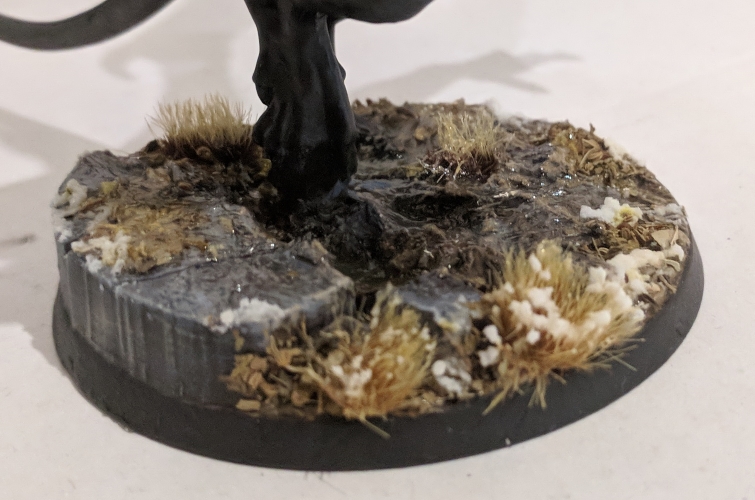
The Great Eagle-eyed among you will have probably already noticed all of those Moria miniatures that have been all over this post on your way down here. Before I had the only slightly insane idea to play through The Fellowship of the Ring as a narrative campaign, I had already made the decision to attempt a play through of the Mines of Moria,. This was my reason for painting up the 27 previously seen Moria Goblins, and the reason I had a whole bunch of Moria loot sitting in my cupboard waiting to be assembled and painted sometime. The idea was simple: build and paint a somewhat functional matched play army of Moria Goblins, with a focus on having enough bits and pieces to play some Fellowship-style scenarios – and put together a set of terrain to represent Moria.
And so I did. The first step was adding some Heroes to actually lead all the Warbands, and so I set to work on the Moria Goblin Commanders set, followed by Durburtz the Goblin King of Moria. Of course, it was after this I noticed that my approach to Goblin Skin had changed somewhat, and I returned to my previously renovated Goblins to make some slight tweaks and improvements, before adding a whole bunch of Goblin Archers to the mix as well. The last pair of additions were a couple stands of Giant Bats (which will be handy for Dol Guldur down the road as well) and The Balrog himself.
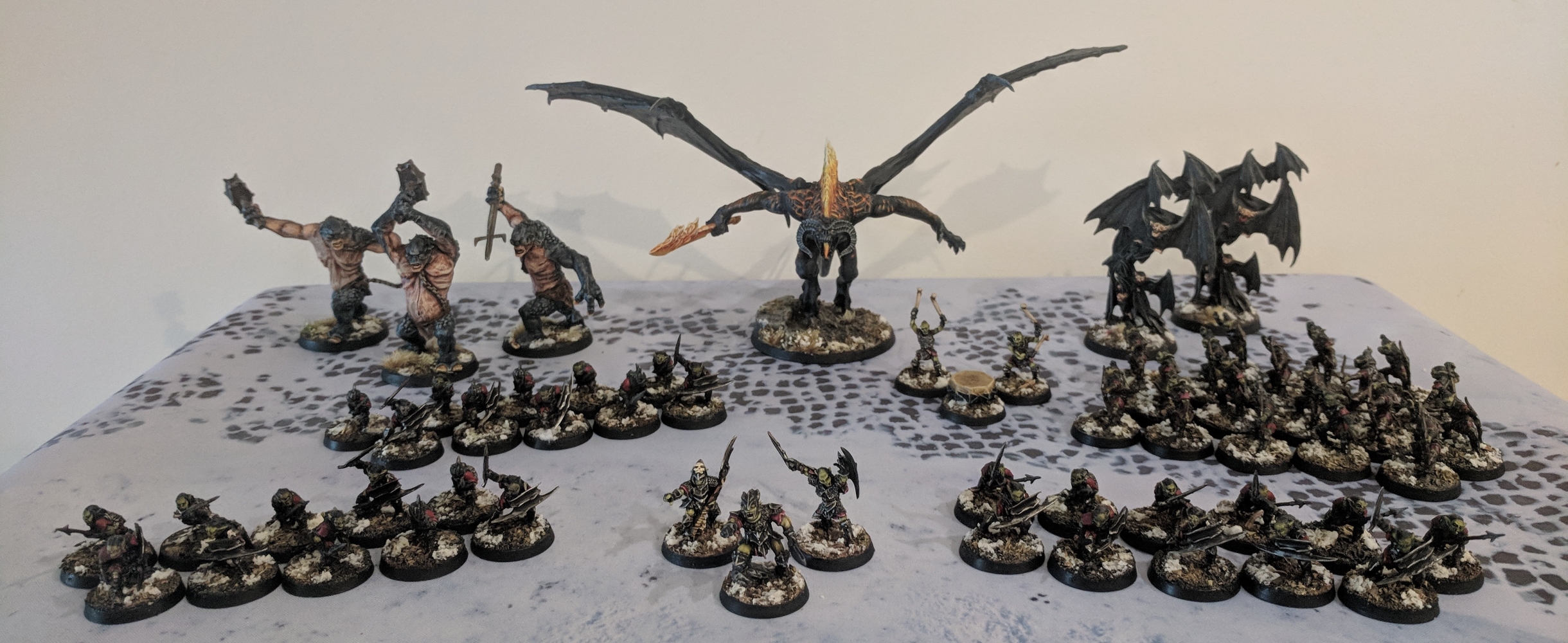
Following the miniatures themselves was the terrain. For the vast majority of The Lord of the Rings, battles and scenarios are largely set in woodland or grassy areas of some description – and I’ve already got that covered. In a sense, this was my primary motivating factor for my first set of Middle-earth terrain being set in the Trollshaws – grassy/rocky mats, trees, stone formations and the like are all incredibly re-usable and repurposeable for representing all sorts of areas in Middle-earth in a way that any specific architecture type is not. Rohan is pretty visually distinctive from Minas Tirith, yet Pellanor Fields and the borders of Fangorn look fairly similar save a couple of landmarks. I’m pretty comfortable in the notion that I could reproduce the sorts of terrain between Bree-land and the Ford of Bruinen (this was my aim from the beginning) save for Amon Sûl itself, and areas such as Amon Hen are easily reproduced with the same sort of terrain, replacing the Stone Trolls with the ruins of Amon Hen itself. All fairly achievable terrain goals, with one or two big pieces to work on as and when they become relevant.
For Moria, however, I would need an entirely new set of terrain – starting with the game mat. After a bit of digging around, I decided on a Dungeon mat from Deep Cut Studio. As well as being reasonably priced, I have some experience with Deep Cut in the past – I went with them to get my neoprene Blood Bowl pitch printed – and I really like their overall quality and designs. The “Dungeon” style seemed the most appropriate for Moria – the visual design of dark-to-mid grey slabs with the occasional moss or cracking hit a nice sweet spot between the craftsmanship of the Dwarves vs the erosion of time when the mines were lost to the Enemy. Additionally, as this supposed to represent an underground city, I had wanted to avoid anything that looked too much like a cave – and the ‘paved’ sort of look also helps keep the mat repurposable, like my grassy style mat. The 25mm square paving design feels like it could be used as the basis for a Dol Guldur map down the line, or even the city streets of Minas Tirith at a push – provided there was enough building terrain on the board.
With the surface dealt with, the next step was populating it with some scenery. I was inspired pretty immediately when I stumbled upon these pillars on eBay, hand made by a Polish hobbyist to the likeness of the Dwarrowdelf. I snapped these up pretty much immediately – they look great, are super light weight and can bring a real identifiably ‘Moria’ feel the the table. I then set about putting together a few stands of Scatter Terrain to bring a few interesting features to the table rather than simply a flat expanse with some pillars. My first inclination was to add a well – such as the one that Pippin had an unfortunate encounter with – and I found a cheap resin cast pair of wells with a couple of barrels and boxes on eBay for under a fiver.
I knew that I wanted to base my scatter terrain for this board – having used a bunch of free-standing ammo boxes and crates in my 40K games, I’ve learned this can be a bit of a pain if you’re trying to set up and tear down a table quickly, and so I cut out some plasticard ‘blobs’ for them to sit on. The wells looked a little bit lonely by themselves, and I started to think about what other features you might find scattered in Moria when it hit me – bones. Moria is a tomb, covered with the decaying bones of Dwarves slain by the Orc invaders, and so it made sense to have a bunch of scattered bones and skull piles as scatter terrain – not only would it help bring a contrasting colour to the otherwise “all grey all the time” terrain and dungeon, but it would also help make my terrain stands more identifiably ‘difficult terrain’ – it’s not especially easy to wade through piles of dusty cob-webbed bones, after all.

It’s surprisingly difficult to find 28mm bones. Everyone and their mum seems to have a ‘bag of skulls’ product – from Secret Weapon to Citadel themselves, you can get a product that amounts to ‘lots of skulls.’ But what about the rest of the body? Eventually, I stumbled upon a company named Toad King Castings, who do a range of cool bones and skulls products, from sheets of mishmashed bones to bone debris piles to literal piles of skulls. I loaded up my cart with about £20 odd of various bones and skulls, and set to work on adding them to my terrain stands.
The last piece of terrain I put together for this set was a Balin’s Tomb. I had completely forgotten about this absolutely integral piece originally, though I got lucky and found a guy willing to sell his Balin’s Tomb for a couple of quid on a Facebook trading site. After a quick bath in Biostrip 20, I scrubbed it clean and affixed it to my last stand of terrain with whatever bits and pieces of bone debris I had left from the rest.
The process of painting these was quick and simple. First, I covered the bare plasticard with Vallejo Black Lava texture paint and primed them with Hycote Grey Primer, followed by a wash on Nuln Oil, Heavy Bluegrey drybrush and final wash of Nuln Oil to bring the tone back down to almost black. The stone objects such as Wells or Balins Tomb were given a Stonewall Grey drybrush and a very light Khaki Drybrush afterwards to bring them up a little from the rubble. The scatter bones were given two or three thin coats of Elfic Flesh to get an opaque coverage, followed by a wash of 50/50 Seraphim Sepia and Agrax Earthshade to give them a darker, dustier bone look. Afterwards, the were touched up lightly with Elfic Flesh on the most exposed areas. The Skull Piles I did a little faster – I opted not to actually glue those down, but gave them a quick blast of an off-white spray paint I had, followed by the same Agrax/Sepia 50:50 wash and a quick Elfic Flesh drybrush to finish. It was at that point I glued them to their stands and covered any raised edges with a little extra Black Lava.
That was just about all there was to it. With a final step of gluing a couple tufts and some static grass down in a few patches, I called it a day. All in all, the terrain set took a couple nights work in between painting my Moria miniatures themselves and I think they came out pretty well.
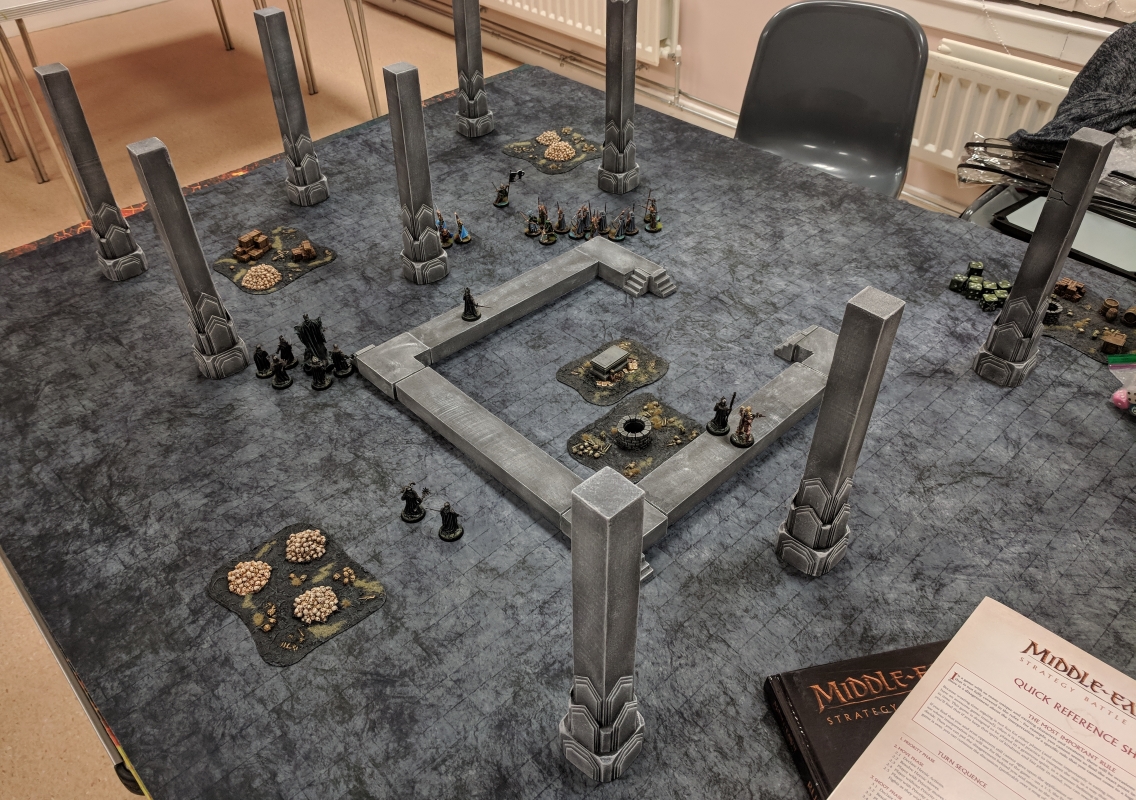
The final addition to my Moria terrain set was another eBay purchase. The Fellowship Journey Book includes some pretty handy terrain tutorials, the most impressive of which I thought was the dual purpose Balins Tomb / Escape from the Dwarrowdelf terrain set. Instead of purpose building a singular piece for each, the terrain is split into several smaller, generic pieces such as long stretches of concrete, corner pieces, stair pieces and support pillars. As well as being easier to store, the terrain is multi purpose and can be used to set up the boundaries of Balin’s Tomb, the walkways of the Escape and the Bridge of Khazad Dum. I had an inkling that it all looked very familiar, and that’s when I returned to our friend in Poland. Once again, hand made and seemingly exactly to the specification in the Journey Book for an – all things considered – extremely reasonable price when factoring in the materials, labour, and sheer mess that often accompanies working with foam. This would round off the terrain set for Moria, giving me a full set to play on for both Balin’s Tomb and Escape from the Dwarrowdelf scenarios, as well as enough scatter terrain and various bits and pieces to make generic matched play games set in Moria or any other underground Dwarven Kingdom feasible.
With that, the Moria section of our journey through The Fellowship of the Ring was just about completely taken care of. There are a couple of missing bits and pieces – the Watcher in the Water scenario is completely unaccounted for as of now, for example – but I didn’t want to immediately get myself bogged down on anything that would see play in neither early scenarios or interim Matched Play Games. There will be plenty time to prepare for this in the coming weeks, but in the meantime, I have a very serviceable Moria battlefield and army to play with.
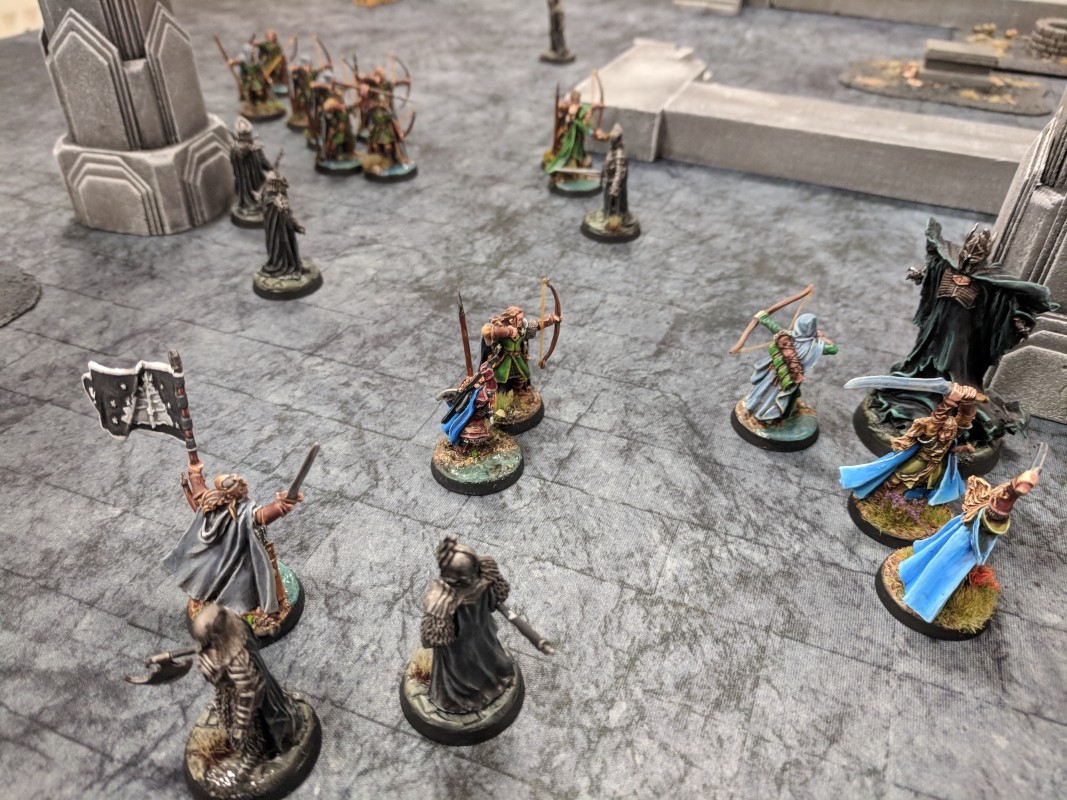
So, what next? Well, with the bulk of Moria accounted for, it’s probably time I turned my gaze to the beginning – as was always the intention. I already have the Rangers and Hobbits accounted for in the first six or so missions, and I have much of the generic terrain – trees, hedges, dirt paths and the like – ready to go. Before I play even the first mission, I’ll need to get some generic Ringwraiths painted up and ready, followed by (in chronological order) Gildor Inglorion, two Barrow Wights, something to use as a the Brandywine River and the Bucklebury Ferry, and then onto Weathertop itself.
It’s going to be an exciting journey!
Thanks for reading, and happy wargaming.
1 To be fair, at this stage, I have an awful lot of Horus Heresy miniatures to play with as is – I have yet to even find the opportunity to play with my Fellblade, Tartaros Terminators, several of my Dreadnoughts and pretty much my entire Iron Warriors army as of yet. Those six Jetbikes, Geigor Fell-hand and a Xiphon Interceptor aren’t going anywhere – and I definitely do not need new sculpts for my Deathsworn, or Hvarl Red-blade.
2 At least until my mounted Gil-Galad and Glorfindel miniatures finally arrive from Unreleased.
3 If I could give a second, slightly contradicting piece of advice though – it’s finish what you start, at least on a model/unit basis. I’m not saying you need to follow through if you start a new army, paint a unit and decide you’re not feeling it anymore – but a half-finished HQ model, or a new unit you were totally excited about until something new caught your eye isn’t any good to anyone, and will leave you feeling hollow and empty. Finish what you start – you can at least use or display it that way.
4 I, personally, have dipped my toes in World of Warcraft – but I spent a huge amount of time playing the MMORPG ‘The Lord of the Rings Online‘ back in the pre-Free to Play/Shadows of Angmar days.
5 Were I less of an idiot, however, I very well could’ve built a Thousand Sons army for my Traitors instead of my Iron Warriors, and run a narrative campaign centred around the Burning of Prospero out of Inferno by this point.
6 One minor caveat is that my Dúnedain Rangers are the Rangers of the North miniatures, garbed in their Grey Company robes over a set of chainmail, which the more rustic Dúnedain models lack. I am, however, willing to make this one slight concession to authenticity for the sake of not having to paint a whole 9 more Rangers.
7 I believe my Nazgul miniature count is currently up to 15 – the Nine Nazgul of Dol Guldur; the Witch King, Tainted and Dwimmerlaik foot and horseback, and a Nazgul on Fell Beast.. None of which properly satisfy the early Fellowship ‘Dark Rider’ aesthetic.
